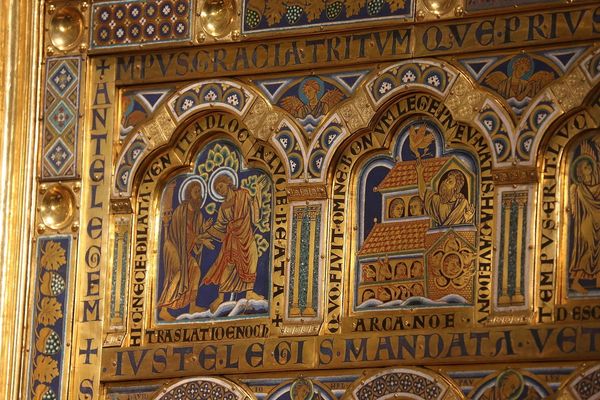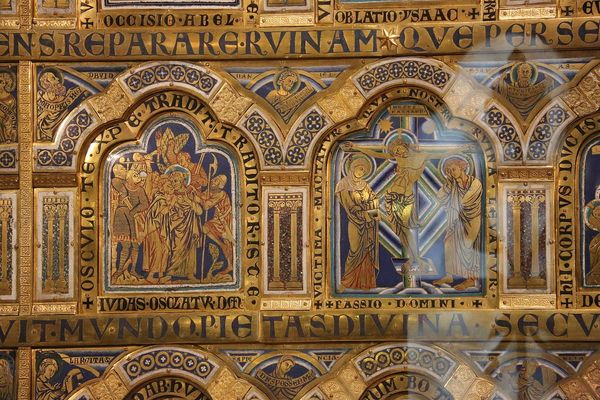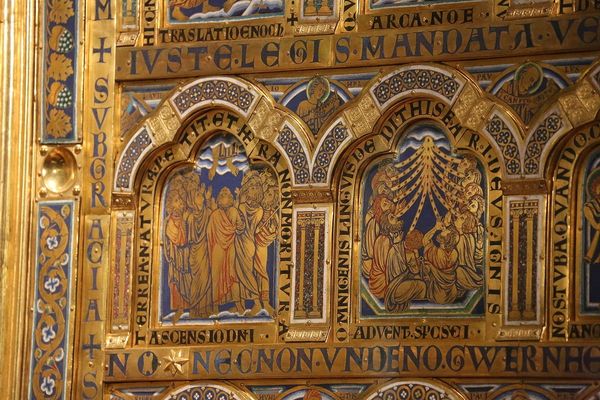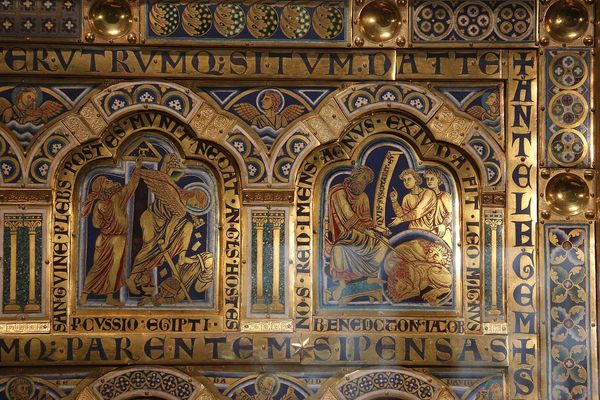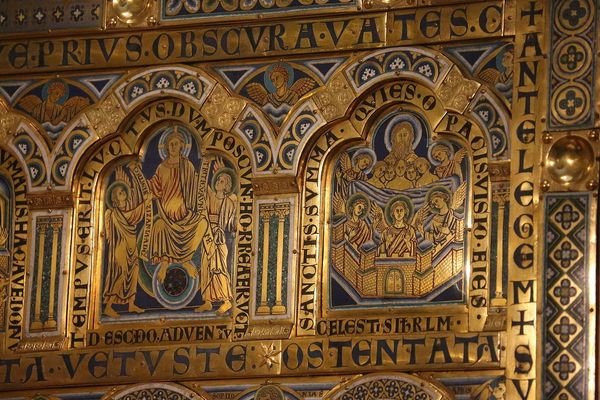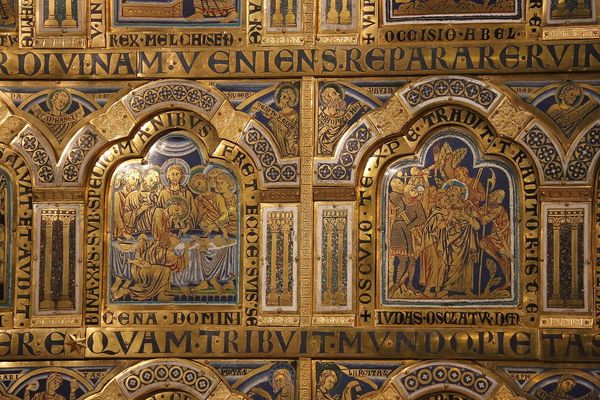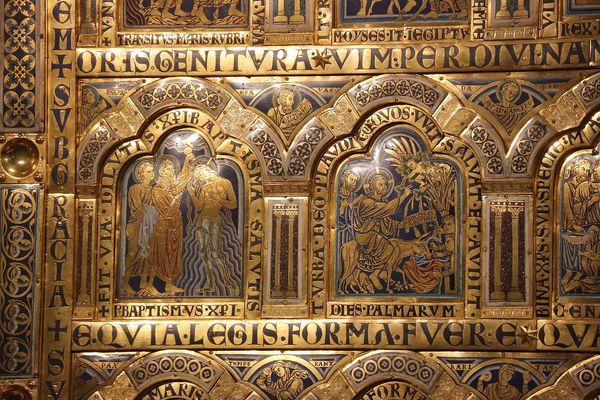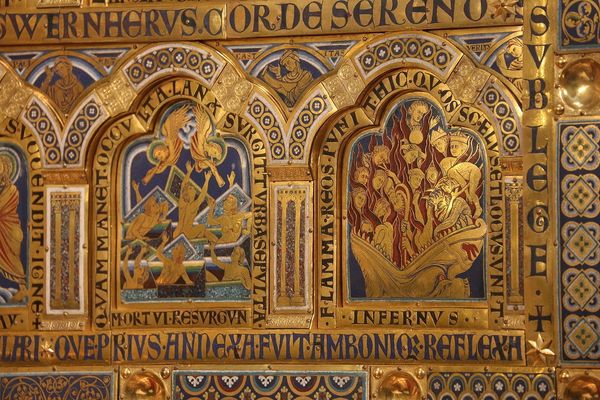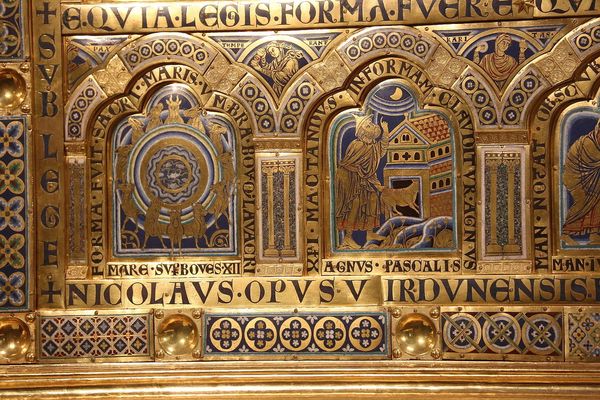
mosaic, mixed-media, carving, tempera, metal, gold, relief, sculpture, engraving
#
mosaic
#
byzantine-art
#
mixed-media
#
medieval
#
carving
#
tempera
#
metal
#
sculpture
#
gold
#
relief
#
holy-places
#
historic architecture
#
traditional architecture
#
sculpture
#
history-painting
#
engraving
Copyright: Public domain
Curator: This riot of gold—it almost hums with the fervor of faith. You know, looking at it now, I’m reminded of when I tried to gild a birdhouse with spare gold leaf. Total disaster, glittering failure. But this, this just overwhelms. Editor: We are standing before the Klosterneuburg Altar, a remarkable work of mixed media completed in 1181 by Nicholas of Verdun. It showcases a convergence of tempera, metalwork, carving, and mosaics. We can delve deeper into the visual grammar here… Curator: It's so dense! I feel like I could spend hours decoding it. It seems medieval art really didn't believe in negative space! Editor: Exactly! The altar exemplifies the Byzantine aesthetic’s focus on surface ornamentation, deploying figural reliefs that interweave scenes from the Old and New Testaments, but read also like a deeply considered, even politicized argument about sacrifice, authority, and redemption. It speaks to how sacred objects like this reinforced the sociopolitical orders of their time. Curator: Authority feels like the key word here, right? Every figure rendered with such unyielding formality. But I can’t help feeling a flicker of vulnerability there in some of those faces, almost overwhelmed by the grandeur they're meant to inhabit. Or maybe that's just me projecting. Editor: And those vulnerabilities were often projected through power—how many were excluded to define who had proximity to holiness? Consider who paid for the gold, and the implications of those visual strategies, for a mostly illiterate audience in 12th-century Austria… Curator: You’re absolutely right, context changes everything. Still, even divorced from its original context, the piece retains a compelling raw power. You can almost hear the chants, feel the chill of the stone. It really embodies something about the sheer will to believe. Editor: Indeed— and belief, as Foucault argued, is itself a form of power. This piece demands we look closely at how faith can sculpt reality. I think the lingering power resides not just in its aesthetic impact, but in the continued debates it provokes around representation, value, and dominance.
Comments
No comments
Be the first to comment and join the conversation on the ultimate creative platform.

